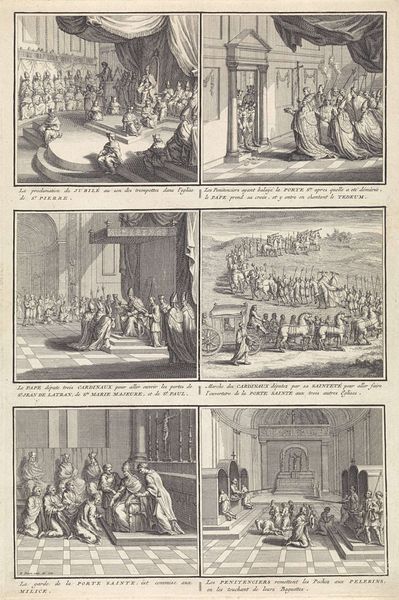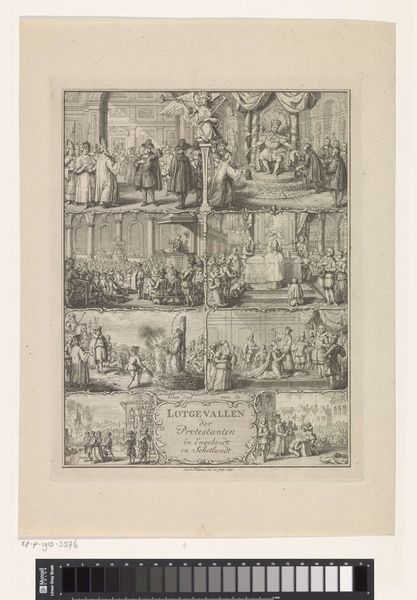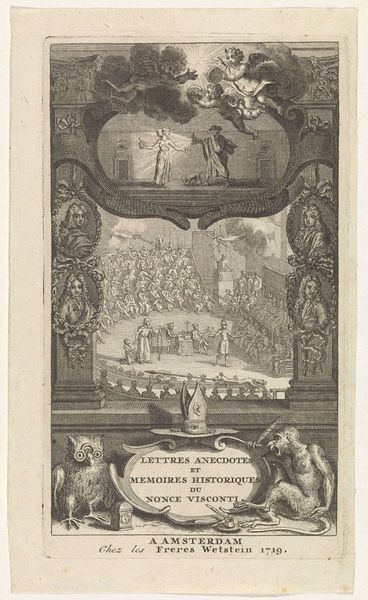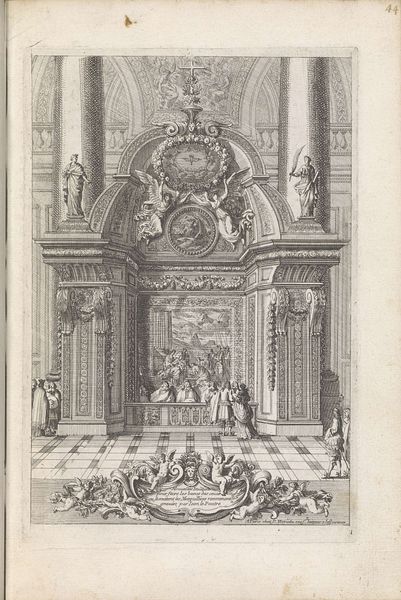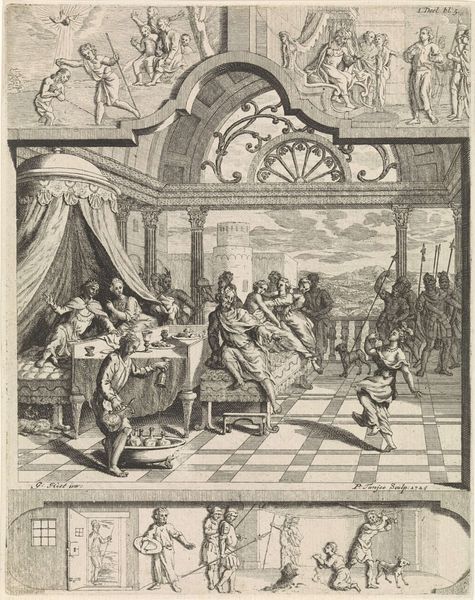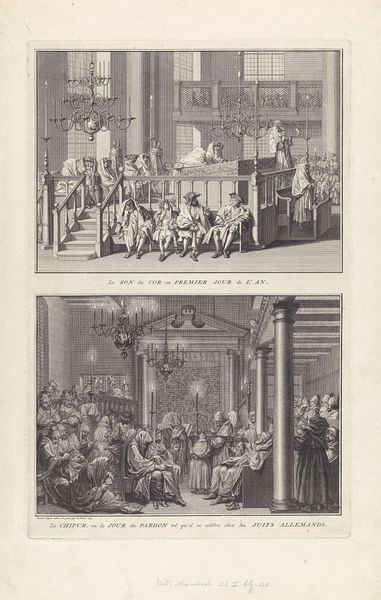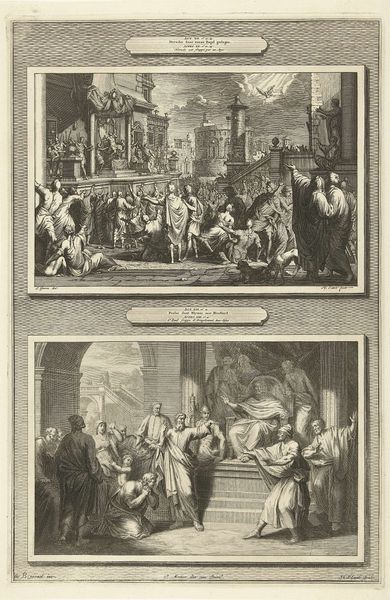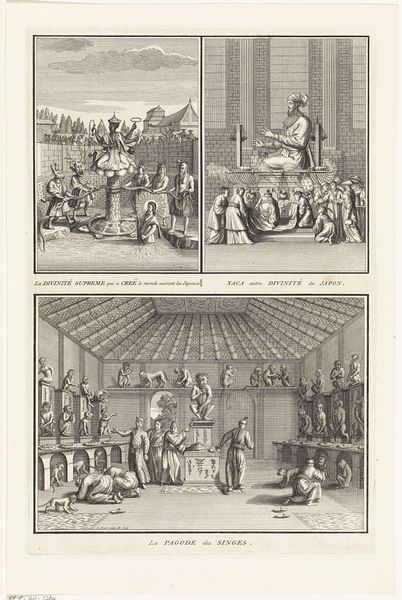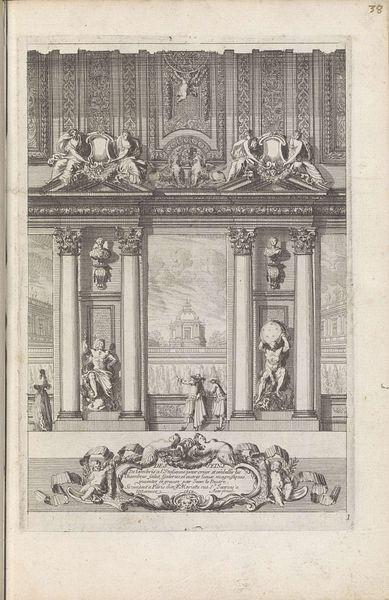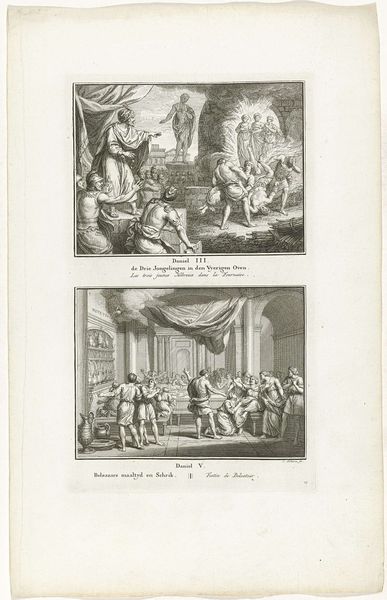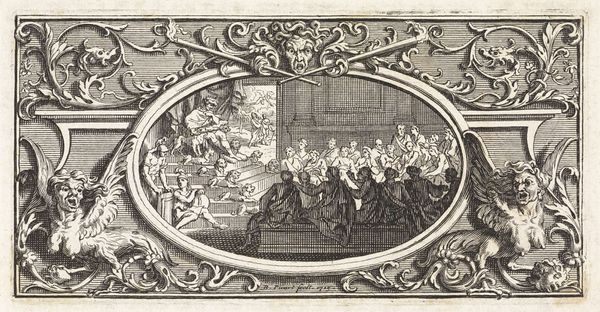
print, engraving
#
baroque
# print
#
asian-art
#
figuration
#
line
#
history-painting
#
engraving
Dimensions: height 332 mm, width 221 mm
Copyright: Rijks Museum: Open Domain
Curator: This is a print titled "Beelden van Chinese god Xekia" created around 1726 by Bernard Picart. It's currently part of the Rijksmuseum collection. What are your immediate impressions, Editor? Editor: Bleak. Hypnotic, yet somehow...bleak. Two scenes stacked one atop the other, rendered in precise, unforgiving lines. A chilliness that whispers of ritual and…expectation. Curator: That aligns with its historical context. Picart made this engraving during a time when European understanding of Asian religions was limited, often filtered through a lens of exoticism and, at times, misinterpretation. It was initially part of a book illustrating world religions for a European audience, aimed at providing what they believed was an objective view of foreign customs. Editor: "Objective," huh? I find the European gaze dripping all over it! Look at the composition, the architectural rendering. It’s like staging a play about the 'Orient,' a play seen through a decidedly Western frame. See how those distant mountains are both monumental and strangely... passive? Curator: Indeed. While appearing informative, images like these subtly reinforced existing European hierarchies. The rigid perspective, the emphasis on detailed architectural space—it places the viewer in a position of observation, perhaps even judgment. This approach played a key role in how European audiences constructed knowledge about non-European cultures. Editor: Exactly! It’s not just *showing* a scene. It's *arranging* a power dynamic. And the sheer busyness of the lines makes me feel… well, frankly, a bit overwhelmed, which I suspect was part of the intent. Look at those tiny figures meticulously replicated; like an infinite army, are they lost or guided, happy, sad or simply going to church? It's like an overwhelming set of directions, without the compass or understanding of why. I don't find an invitation for understanding, only observance. Curator: It's important to recognize that Picart, despite the apparent neutrality of the engraving style, was still participating in the broader project of European colonialism, subtly influencing the perception of different cultures and power dynamics. Editor: So, not just looking, but participating in the "construction" of otherness. As art it's brilliant for capturing that perspective and the feeling is perfectly and accurately transferred, without any colour or motion, to me hundreds of years later. I guess you cannot ask for a better achievement than a mirror held through time. Curator: A powerful note to conclude on. Thanks!
Comments
No comments
Be the first to comment and join the conversation on the ultimate creative platform.
